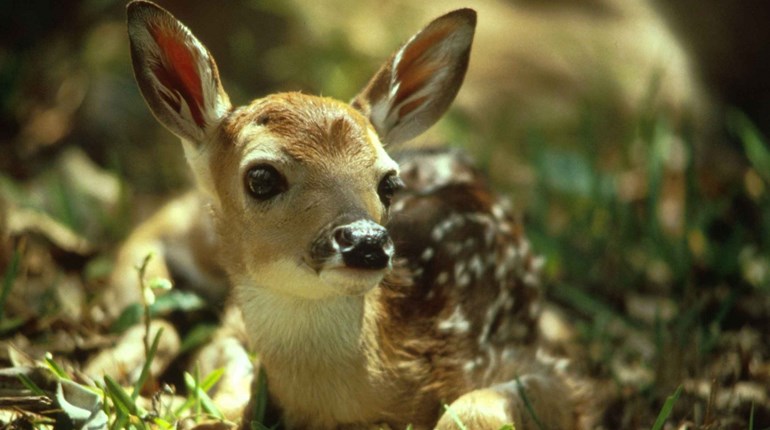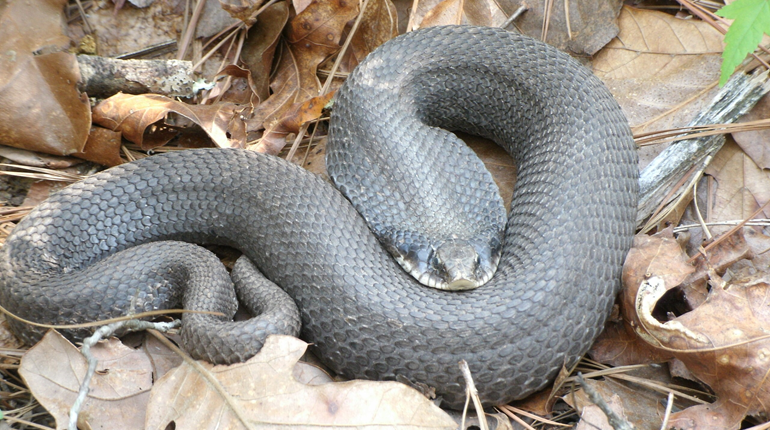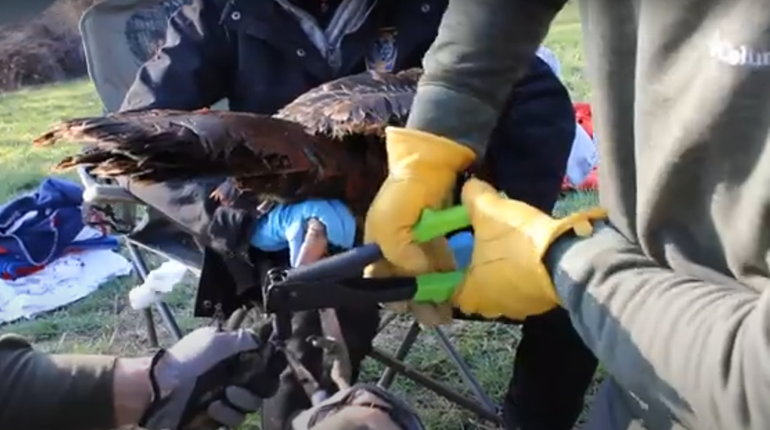
Texas horned lizards, or the more familiar “horned toads,” feature fondly in the childhood memories of Americans who hail from the West. But don’t call it a “horned toad” (or, heaven forbid, a “horny toad”)! These so-ugly-they’re-cute critters may look like toads, but they’re actually lizards. What’s the difference? Both lizards and toads feed primarily on insects, but only the reptilian lizards have scales on their bodies, claws on their feet and external ear openings. Toads and other amphibians have moist skin, which is usually smooth, and they lack claws and external ear openings.
The fierce-looking lizard’s head wears numerous prominent horns, with two central head spines being much longer than any of the others. Two rows of fringed scales extend along each side of the lizard’s brownish body. The Texas horned lizard is the only species of horned lizard to have dark brown stripes that radiate downward from the eyes and across the top of the head.
Texas horned lizards range from the south-central United States to northern Mexico, throughout much of Texas, Oklahoma, Kansas and New Mexico. As semi-arid and desert dwellers, they’re better adapted to dry conditions than most reptiles and amphibians. One of their secret hydration strategies involves those scary-looking scales—these lizards can funnel rain and dew down channels of scales on their back to drink.
Despite all those spines and scales, the Texas horned lizard is harmless to people. They don’t bite, scratch or sting, and in fact, many older folks have fond memories of catching them and playing with them.
“But even so, it was always exciting to spy a diminutive horned beast scampering across the ground. Did you ever roll them over and rub their bellies until they fell asleep? Or catch one and put it on a red ant pile and watch as it snacked on those pesky little devils? Among all the critters with which a young Texan had the opportunity to cross paths, horny toads [SIC] were certainly a favorite,” muses a columnist.
These days, there are fewer Texas horned lizards on the ground, and the reason why is, well, the ground. “Texas horned lizards need somewhat loose soils, with relatively open vegetation and exposed ground to thrive,” said Cheyenne Gonzales, Oklahoma Wildlife Diversity Program biologist. “They’re sit-and-wait predators, relying on their camouflage to avoid being spotted by predators and waiting for ants next to their open trails.” Habitat loss to non-native crops and grasses is primarily to blame.
Mark Howery, senior biologist with the Wildlife Department’s Wildlife Diversity Program, noted that there are things that individual citizens can do to help welcome the Texas horned lizard back. “The first and foremost way to help Texas horned lizards is to conserve their habitat,” he said. “It all starts with native vegetation.” Native vegetation—with plenty of bunch grasses and flowering plants—doesn’t just help the lizards more easily move around their environment, it also helps the lizard’s main food source, ants.
“Harvester ants are feeding on the seeds of these grasses and forbs,” continued Howery. “While people may avoid spraying ant mounds with insecticide, they may not realize that spraying ‘weeds’ with herbicide can be just as detrimental to the lizards and their food supply.”
If you’d like to learn more about how you as a landowner can help keep the Texas horned lizard from being just a nostalgic memory, click here for more from the Oklahoma Department of Wildlife Conservation.






































